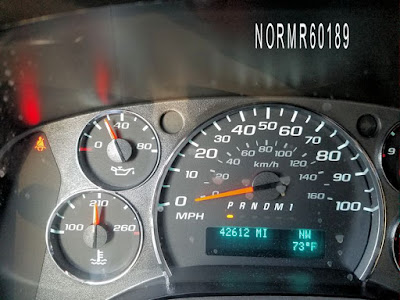Update
I did replace the tires. Our Chevy dealer gave me a very good deal on the same Bridgestone tires that came on the Roadtrek. Because we have had good results with that tire I decided to continue with what works, based on personal experience.
If you want to determine if the tire is expired or recalled, type the entire DOT code into this website:
http://www.tiresafetygroup.com/
The NHTSA also has a website where tire recalls, safety can be checked:
The new tires:
- LT245/75R16 E M+S (load range E, Meets the Rubber Manufacturers Association (RMA) guidelines for a mud and snow tire. ).
- Service Description: 120/116S (Maximum load - single: 3,086 lbs. maximum load - dual: 2,756 lbs., per tire @ 80 PSI) with speed rating "S" = 112 MPH.
Original Post June 6. 2020
Our 2013 Roadtrek 210P came with Bridgestone tires. At 42,600 miles and nearly 8 years old, these have done very well (Chevy chassis manufacture date 12/2012). With these tires we find the road noise acceptable at highway speeds of 80 MPH. These tires show no signs of rot, remaining tread sufficient according to the Michelin tire indicator. etc. Ergo, my satisfaction. Some might say I'm a preventative maintenance nut because I rotate the tires about every 6,000 miles. But PM is about avoiding unscheduled breakdowns. I want to get where I'm going while trekking and that's why I perform PM and why I carry some unusual spare parts. "Avoid" but not "Eliminate" because things do go wrong from time to time.
We rotate these tires with every oil change. At about 43,000 miles the wear is balanced. "You get what you pay for" and I do think the frequent rotation and tire checks are a good investment in worry and maintenance free controlled trekking; I want to avoid unscheduled maintenance stops. I'd add "You get the service life that you maintain for".
Definition of Highway All-Season: Focused on longer tread life while providing a smooth ride and sufficient all-season traction
FMCA Tire Discount Program
Cost to Operate
From a cost to operate perspective the tires cost me about $125 per year. I pay about $60 for each maintenance visit to our Chevy dealer. That includes full synthetic oil change, tire rotation and multi-point inspection. This occurs about every 6,000 miles, or over 8 years, about once each year. A really good investment, in my humble opinion. I do simple things like replacing the wiper blades...
Original material: https://roadtrek210.blogspot.com/












